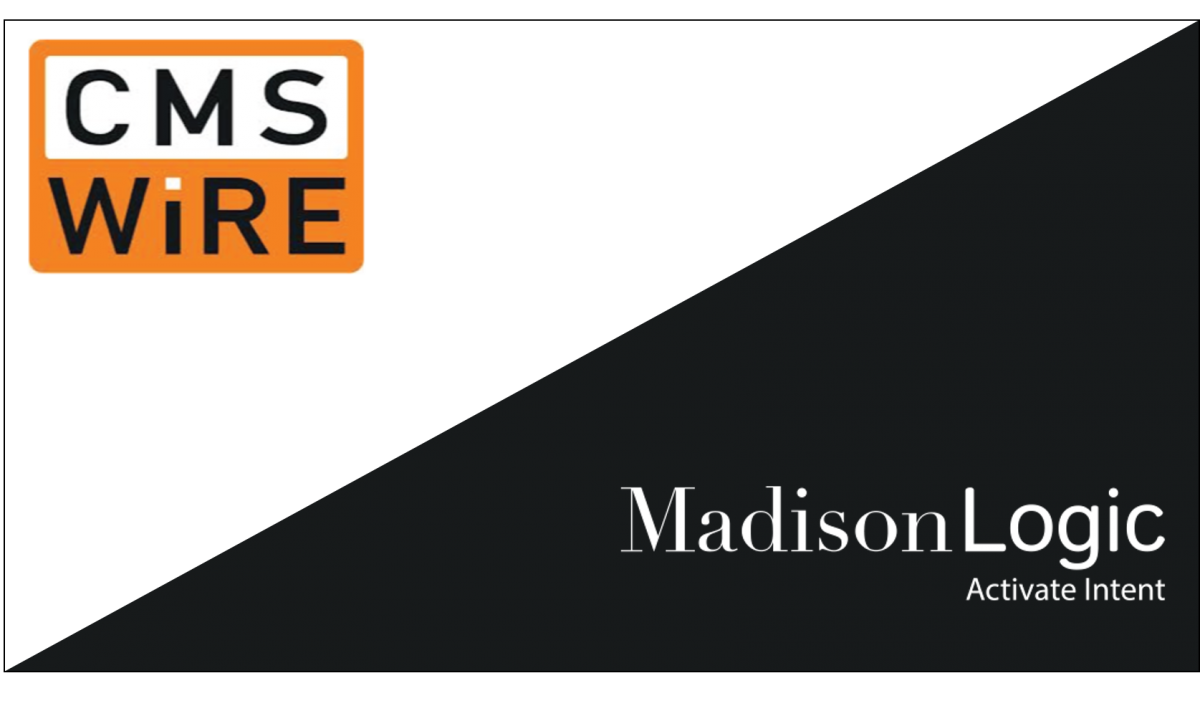
Why LinkedIn Dumped a $175M MarTech Acquisition

This article was originally written by
LinkedIn admitted it failed to accurately forecast the resources required to scale the B2B ad targeting platform it acquired from Bizo in 2014. It plans to terminate the offering.
As a result, it will take a $50 million hit in forecasted revenues, LinkedIn officials said yesterday in the online professional network’s fourth-quarter and annual revenue report. The acquisition cost LinkedIn $175 million and led to the short-lived creation of its Lead Accelerator product, which LinkedIn officials said they will phase out in the first half of this year.
“Our strategy in acquiring Bizo was to create a unified ad platform to better address the B2B market opportunity,” LinkedIn Corporation Chief Financial Officer Steve Sordello said in a conference call with investors. “In 2015, we launched specific products, particularly Lead Accelerator, as standalone offerings. While initial demand was solid, the product required more resources than anticipated to scale.”
Matter That Much?
LinkedIn has three product lines Talent Solutions, Marketing Solutions and Premium Subs, which includes Sales Solutions. Marketing solutions accounted for $581 million in 2015, an increase of 28 percent from the year before. LinkedIn has visions of that numbernearly doubling to $1 billion by 2017.
Perspective on Bizo: The $50 million cash burn amounts to a little more than one percent of the 13-year-old Mountain View, Calif.-based company’s total revenue for 2015: $2.99 billion, up 35 percent from last year. LinkedIn includes more than 300 million members, in the ballpark of Twitter but still behind Facebook (1.55 billion).
LinkedIn’s probably not going to lose sleep over the loss of Lead Accelerator, which intended to help users:
- Nurture prospects through targeted display and social ads
- Sequence ads based on who prospects are and what they do on websites
- Reach known contacts beyond email by integrating Marketo and Oracle Eloqua marketing automation systems
- Use A/B testing to optimize ads, messaging and nurture streams
- Measure ad performance
Instead, LinkedIn will incorporate the technology into its Sponsored Content throughout 2016. An extension of Sponsored Updates, the Sponsored Content feature allows marketers to personalize and test content in the newsfeed without having to originate posts on their LinkedIn company page.
“This change should ultimately benefit the entire Sponsored Content customer base with a stronger product and more streamlined experience,” Sordello said. “We also remain committed to support our current Lead Accelerator customers through the migration. Sponsored Content is our fastest growing and most profitable ad product, so we will increasingly focus our efforts here to scale our B2B capability in the fastest, most sustainable way.”
Simplifying the Problem
So what went wrong?
Tom O’Regan, CEO of New York City-based account-based marketing provider Madison Logic, said persona-based targeting is valuable, and LinkedIn had an opportunity to make this work from a brand perspective.
“The harder act to follow,” he said, “is showing a positive correlation on how those branding impressions impacted demand generation. Without it you’re just talking about old metrics that don’t fuel today’s B2B marketers’ pipelines.”
Reached by CMSWire today, a LinkedIn official said some customers did embrace the new Bizo offering’s retargeting and sequential messaging capabilities. However, it required customers to access and manage campaigns through a separate ad platform. Fenot Tekle, head of B2B public relations for LinkedIn, called that challenging for many of them.
“With that in mind,” she said, “we realized we need to simplify and significantly improve our customers’ experience and performance through one single ad platform.”
LinkedIn officials promised in their earnings report Thursday that when excluding the past and future impact from Bizo, they expect their Marketing Solutions business to accelerate in 2016.
In what ways?
“Our goal is to offer easy to-use products that drive performance for our customers, and reduce the friction in how our team operates, builds products and goes to market,” Tekle said. “Sponsored Updates is our fastest growing monetized product and it represents 52 percent of LinkedIn Marketing Solutions revenue.”
LinkedIn will continue to “aggressively” invest in Sponsored Updates by introducing more functionality in the coming year.
“We believe this kind of investment will benefit the entire sponsored content customer base with a stronger product and more streamlined experience,” Tekle told CMSWire.
Bizo Had Momentum
Bizo clearly caught the attention of LinkedIn for good reason.
“As customers move from phone to desktop to tablet, and so on, marketing automation companies are struggling with cross-device tracking and targeting,” wrote Ben Plomion, senior vice president of marketing at GumGum, at the time of the LinkedIn acquisition. “Bizo, meanwhile, has a marketing automation solution that addresses some of these challenges. By adding display as a delivery mechanism to target anonymous site visitors, Bizo allows marketers to reach a much larger audience than traditional marketing automation companies.”
Bizo officials told us three months before the acquisition they had a new tool defines a new era of marketing automation beyond the email inbox. Marketers would have the ability, they said, to nurture their anonymous website visitors that have not yet provided an email address. It was a patent-pending Multi-Channel Nurturing solution that Bizo officials said helps B2B marketers use online display and social ads to engage known prospects and convert anonymous website visitors.
Gartner analysts said the LinkedIn acquisition came as marketers looked for ways to use paid advertising to reach audiences and obtain leads — without intruding on the user’s experience. Gartner’s Adam Sarner, Andrew Frank and Chris Fletcher authored the report.
“Bizo’s technology can help marketers,” they wrote, “reach their target audiences via display and social network placements, using a range of ad formats including video and retargeted ads. Bizo also supports multichannel lead nurturing and analytics.”
They predicted the Sponsored Content offering, which represented about 20 percent of LinkedIn’s $102 million advertising revenue in Q1 2014, would “likely increase as LinkedIn emphasizes this paid content offering.”
Bizo, they noted, became a LinkedIn API partner two years before the acquisition when LinkedIn launched its new advertising platform.
‘Odd Fit’?
What’s the reaction around the B2B marketing community?
Chris Golec, CEO of San Francisco-based B2B account-based marketing provider Demandbase, said he was not surprised by the move.
“Bizo was an odd fit from the start,” Golec said. “Companies today want to tie their advertising more directly to revenue, and Bizo’s exclusive focus on persona-based targeting lacked the technology and scale to accomplish this. However, B2B marketing continues to be an almost $40 billion market, and companies will continue to spend heavily, especially when you can help them bridge ad tech with marketing tech and tie advertising investment to actual pipeline and revenue.”
When LinkedIn made the acquisition, Golec was more hopeful.
“Demandbase congratulates LinkedIn on the purchase of Bizo,” he said then. “With this acquisition, LinkedIn is sending a clear signal that the B2B market is massive, and incredibly important to their long term success. LinkedIn will now be able to leverage Bizo’s primary asset, their third party cookie data, to serve ads.”
Sean Ruskino, SVP of strategy at Verndale, a Boston marketing tech agency, called LinkedIn’s write-off of Lead Accelerator “indicative of both internal and external factors for LinkedIn.”
“Building an integrated ad platform that stretches across channels with segmentation and remarketing capabilities is a monumental effort that LinkedIn likely did not initially anticipate when they acquired Bizo in 2014,” Ruskino told CMSWire. “More importantly, B2B marketing is becoming more comfortable with AdTech and buying into open ad exchanges is easier than managing various individual platforms liked a LinkedIn Ad Exchanger. LinkedIn has already started to offer its inventory to the exchanges and seems to be focusing on its sponsored updates capability for its B2B customers.”
‘Underestimated Audience’
Bombora CEO Erik Matlick, whose New York City provider specializes in B2B intent data, doesn’t see LinkedIn’s Bizo dump as technology scaling. Rather, LinkedIn “underestimated the appetite by B2B marketers for performance advertising vs. brand/nurturing.” Further, the scale of the audience and supply “limited the market opportunity.”
B2B marketers are more about performance than branding, he added.
“What LinkedIn underestimated,” Matlick told CMSWire, “was the dependence on performance metrics from B2B advertisers. LinkedIn Lead Accelerator was built for display retargeting — CRM retargeting and nurturing — via display execution. Whereas sponsored links is more of a direct response product.”
Another problem: there is a limited scale of B2B marketers first party data, Matlick said, adding, “Most B2B websites have very small scale.” Therefore there are small first party cookie pools to create retargeting programs.”
Matlick also noted here is a limited scale of supply on the LinkedIn owned and operated network. “Once you further segment the marketers pool of retargetable cookies,” he said, “you then have to find those users on the LinkedIn network or extended network. Again, this further limits the scale of the addressable audience.”

